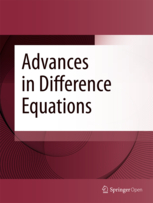 A mathematician has lost two publications that overlap substantially.
A mathematician has lost two publications that overlap substantially.
In this case, it’s easy to see how editors were duped (as it were). Both journals received the papers within a few months of each other, and then published them in quick succession; both have since been retracted. The papers share a first author, Jin Li, affiliated with Jiujiang University in China.
How similar are Li’s papers? See for yourself.
Here’s the abstract for “Landesman-Lazer type condition for second-order differential equations at resonance with impulsive effects,” received by Advances in Difference Equations in June 2014 and published in September 2014:
In this paper, we study the existence of periodic solutions of second-order impulsive differential equations at resonance. We prove the existence of periodic solutions under a generalized Landesman-Lazer type condition by using the variational method.
That paper has been cited twice, according to Thomson Reuters Web of Science.
And here’s the abstract for “Periodic Solutions of Second Order Impulsive Differential Equations at Resonance via Variational Approach,” received by Mathematical Modelling and Analysis in February 2014, and published in November 2014:
In this paper, we study the existence of periodic solutions of second order impulsive differential equations at resonance. We prove the existence of periodic solutions under a generalized Landesman-Lazer type condition by using variational method.
That paper has been cited three times, twice by retraction notices.
Next, here are the retraction notices, which are pretty standard as far as duplication retractions go.
Here’s the notice for the Advances in Difference Equations paper, published last July:
This article [1] has been retracted by Professor Ravi P Agarwal, Editor-in-Chief of Advances in Difference Equations.
Following publication of this article, it was brought to the attention of the editorial and publishing staff that this article has substantial overlap with an article by Jin Li, Jianlin Luo, and Zaihong Wang [2], published in November 2014 in Mathematical Modelling and Analysis.
This is a violation of publication ethics which, in accordance with the Committee on Publication Ethics guidelines, warrants a retraction of the article and a notice to this effect to be published in the journal.
The retraction notice for the Mathematical Modelling and Analysis explains that the paper was pulled last year:
since the same results are published in Springer article
The notice explains the journal’s — pretty universal — policy:
The Editors and publishers of the journal, Taylor & Francis, note that we received, peer-reviewed, accepted and published the article on the basis that the authors are presenting original results and are not intending to publish them in any other journal.
In addition to these retractions, we’ve unearthed an erratum for Li from 2014. It fixes errors in “Existence and uniqueness of anti-periodic solutions for prescribed mean curvature Rayleigh equations,” published in Boundary Value Problems. That paper has been cited five times.
We’ve reached out to Li for comment, and will update this post if we hear back.
Hat tip: Kerry Grens
Like Retraction Watch? Consider making a tax-deductible contribution to support our growth. You can also follow us on Twitter, like us on Facebook, add us to your RSS reader, sign up on our homepage for an email every time there’s a new post, or subscribe to our new daily digest. Click here to review our Comments Policy. For a sneak peek at what we’re working on, click here.
I don’t really get why both are retracted.
Sure, the editors have reason to feel cheated, and they might well have a contract issue
with Li. But look at it for a scientific point of view: presumably the results in the paper
were good. Retracting both copies is more of a pervasion of the scientific record than
keeping one copy or even both copies.
Or maybe the editors are saying that the now-unpublished results should be presented
in a third article.
Note: the subject here is math. The validity of the results can be established (and
hopefully were established in peer review) without the need to trust the author. This
is unlike data-sciences where one could falsify or make up data.
I have similar questions in my head too. Would their unpublished data be plagiarised by a third party? Can they now republish their data in third journal?
This is an inevitable outcome of simultaneous submission.